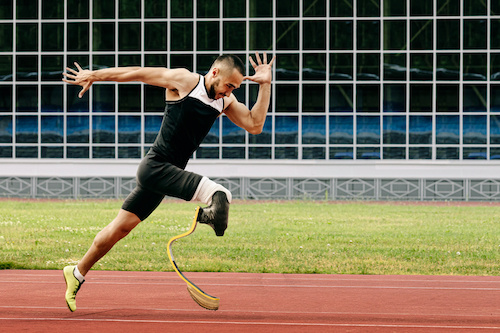The Olympic Games always get the recognition it deserves for both the Summer and Winter Games. Until recently, the general population has overlooked the Paralympic Games. Now, as efforts have been made to make the Olympics and Paralympics more inclusive, the Paralympic Games are more popular than ever before. Watching people adapt to their physical disability and compete with other high-level athletes is something anyone can appreciate. We’ve taken a look at how the Paralympic Games have evolved over the years.
When The First Summer And Winter Paralympics Were Held
The Paralympics have been present in some form since 1948. However, it wasn’t until 1960 that the Paralympic Games became official. It was held in Rome and featured roughly 400 athletes, all with a physical disability. The Games consisted of swimming, table tennis, archery, javelin, basketball, fencing, shot put, and more. The summer Paralympic Games were designed for people who had a physical disability that caused them to be in a wheelchair.
Summer Paralympic sports were the sole organized events until 1976, which is when the first Winter Paralympic Games were held in Sweden. In these Games, nearly 200 athletes participated in sports like ice sled racing and nordic and alpine skiing. Not all of these athletes were confined to a wheelchair, but they had other disabilities to adapt to.
Growth Of The Paralympics
The modern Paralympic era began in 1988 in Seoul, South Korea. The first time the Winter Paralympics were held in an Olympic venue was in 1992 in France. The Paralympics are now held at the same venue as the Olympic Games and begin two weeks after the Olympic Games end. The 1998 Winter Games in Japan featured nearly 600 athletes. The 2000 Summer Games in Australia featured roughly 3,800 athletes from 122 countries. The growth of the Paralympic Games has been significant over the years and continues to grow.
Evolution Of Adaptive Sports Equipment
To say Paralympic athletes have adaptability qualities is an understatement. From overcoming their physical disability to altering their equipment, these athletes have evolved significantly. Wheelchairs used to weigh upwards of 50-pounds, which made them difficult to navigate. By removing parts and trimming others down, athletes have gotten wheelchairs down to a mere 15-pounds to give them more navigability and speed. Adaptive sports equipment has come a long way in recent years for both summer and winter events.
The Summer Paralympic Games are right around the corner and Next Day Access is ready to watch the great athletes compete. To learn more about the Paralympic Games, feel free to contact us.





